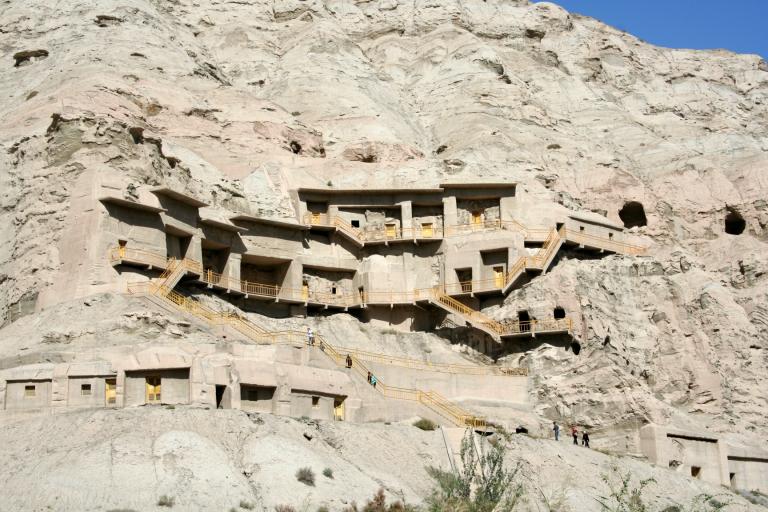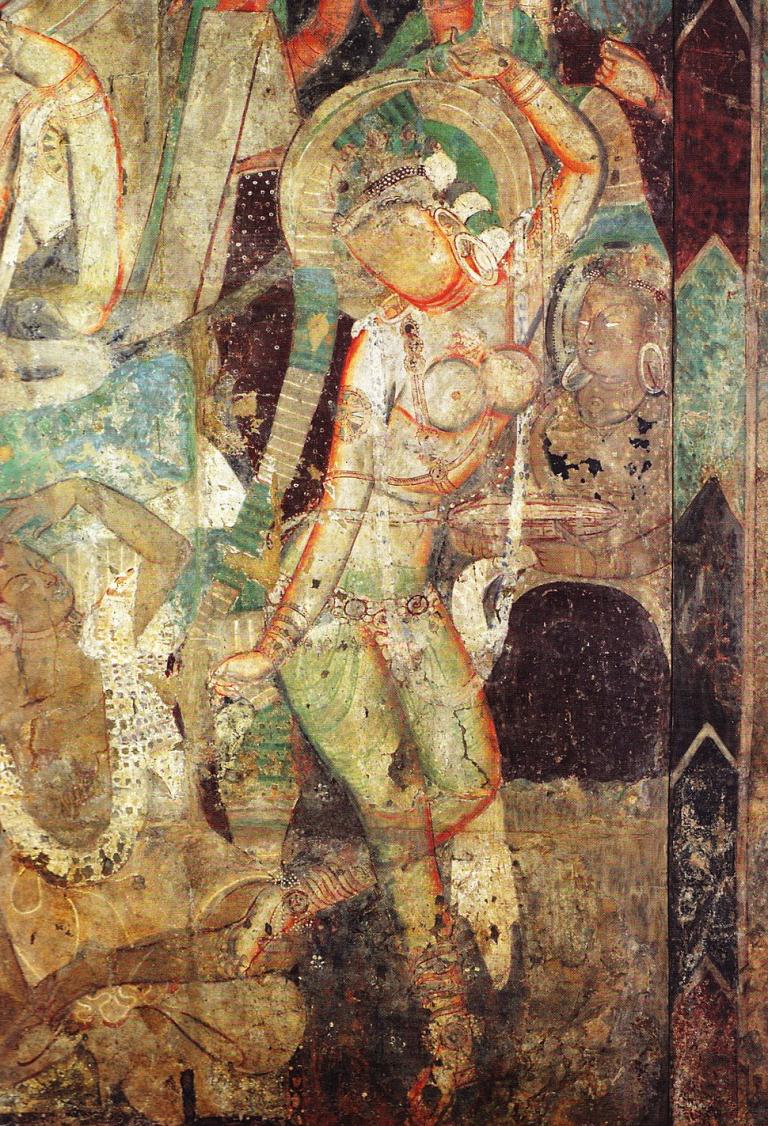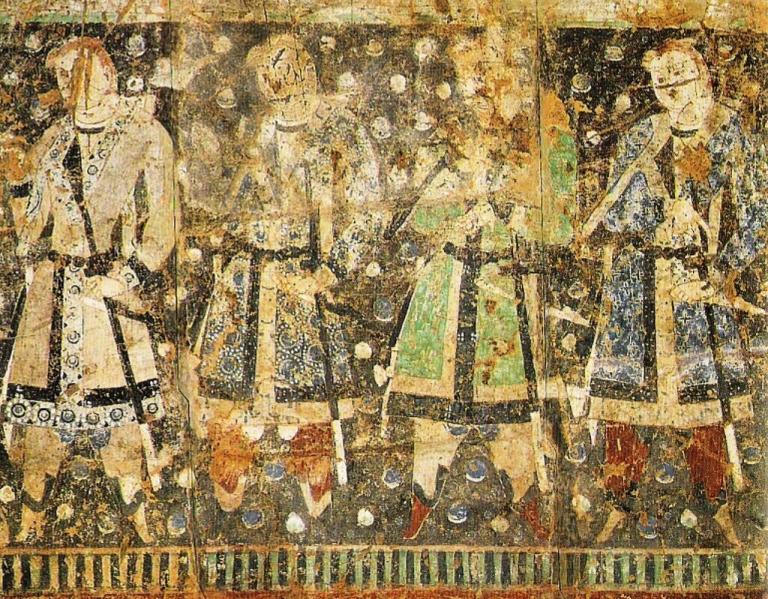Murals in the Kuche Grottoes
4 min readAs Buddhism spread east along the Silk Road, many large temples and grottoes were built in oases, housing exquisite statues and murals. Most of them have been destroyed or damaged over the centuries, yet some have survived, especially the murals in grottoes. Of these, the murals of the Qiuci Kingdom, covering today’s Kuche area in Xinjiang, are some of the most remarkable. While most of the grotto murals in Kuche depict Buddhist tales,a number of them attract special attention by representing a rich mix of the ancient cultures of China, India, Egypt, Greece, Mesopotamia, and Central Asia. Some paintings depict images of the Buddha with a bright aura emitting fromhis arms, legs and feet. Flying apsaras are seen playing all sorts of musical instruments, such as the pipa, panpipe and flute. The sun god sits on a two- wheeled chariot, and the golden-winged king of birds appears either as a two- headed eagle or an eagle with a human head. Seahorses with wings in flight and doves holding rings of flowers in their beaks bear a clear resemblance to Greek art.

Shiva, wearing a colorful robe, has three human heads, one animal head, and three hands. Parvati(also spelled Parvathi or Parvathy,a Hindu goddess and nominally the second consort of Shiva) sports earrings and beautiful jewelry on her head, arms and hands. Some frescos depict Persian kings and knights in helmets and suits of armor, and artists in Egyptian-style black wigs holding brushes and palettes in their hands. Many pictures portray scenes of song and dance. Among the many musical instruments, ranging from those of China(panpipe and ruanxian,a plucked instrument), Persia(pipa, suona,a woodwind instrument, and the vertical konghou,a plucked instrument with five to 25 strings), India(bowed konghou and a five-stringed instrument), and Greece(lila,a plucked stringed instrument), are also seen a wide variety of flutes, horns and drums.

Dancers can be divided into solos and duets. Single male dancers usually sport long scarves, which fly in the air as the dancers swirl rapidly. Female soloists wear only capes and necklaces of pearls and jade on their naked bodies. Duets comprise a male and a female of different complexions. The male usually sports Buddhist robes and has his arm on the female’s shoulders or around her neck in an intimate manner. The female wears a pair of pants with flared bottoms and plays a bowed konghou in a most feminine posture. Their bodies curve in an S shape, with both the male and female in a duet dance on half-tiptoes. The dancing style represents that of India and West Asia. Most outstanding of the murals in Kuche are a large number of nude human images, especially of beautiful female bodies. These include many female acolytes listening to the Buddha espousing Buddhist teachings. Highlights are the female dancers with S-shape body contours, full breasts and round buttocks. These paintings show a clear influence of Indian and Greek art, especially Buddhist art from India. A fine example is the mural depicting what scholars call “Mahamaya(mother of Gautama) bathing.”The young lady, uncovered except for her private parts, stands crossed-legged under a tree with fire-shaped flowers. She sports a fewflowing ribbons on her body and jewelry around her neck and wrists. Two maids are kneeling in front of her. Two other girls are walking towards the tree, each holding a jar of water on her shoulder. Their costumes have wave-like patterns with dark-yellow hems and their water jars evoke an ancient Greek style. The mural as a whole features both Greek and Indian artistic influences. Another fresco bearing clear Greek and Indian connections has a king and his queen as subjects. The king, with a pale yellow complexion, sits cross-legged in the center. His wife sits on his right, resting her left hand on the king’s shoulder. The queen wears assorted jewelry on her naked body, including three gold chains around her waist that tie into a knot in the front of her body. She wears snake-shaped leggings, and both she and the king wear earrings. The king has bright eyes and handsome features. He is holding the hand of a child, and a Buddhist monk is kneeling in front of him.A lady in Greek costume behind the child is speaking excitedly to the king. Two servants stand behind the king and queen, with their palms pressed together in Buddhist greeting. The Kuche grotto murals represent a rich treasure-house left by the Silk Road. They are historical confirmation that the exchanges and integration of different civilizations bring forth the most brilliant flowers of art.









